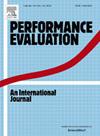Combining process tracing and synthetic control method: Bridging two ways of making causal inference in evaluation research
IF 1
4区 计算机科学
Q4 COMPUTER SCIENCE, HARDWARE & ARCHITECTURE
引用次数: 0
Abstract
This article discusses potential ways of combining two methods of evaluation in single-case studies: the synthetic control method and the process tracing method. Both are designed to examine certain events/programmes that take place in given cases but view these events/programmes from different causal perspectives. Seeing an event/programme as a cause, synthetic control estimates its impact on one or more outcomes. Conversely, starting from a certain outcome, process tracing uncovers the causes responsible. One can start from the causal explanation reached via one of the two methods and then proceed to examine that explanation through the other method. Once the causes of an outcome are traced via a process tracing analysis, that account can be validated by estimating the effects of those causes via synthetic control. Equally, once the impact of a certain event is estimated through synthetic control, causal mechanisms traceable via process tracing can be exploited to refine that impact evaluation.过程追溯与综合控制相结合:在评价研究中架起两种进行因果推理的桥梁
本文讨论了在单案例研究中结合两种评估方法的潜在方法:综合控制方法和过程追踪方法。两者都旨在研究在特定情况下发生的某些事件/项目,但从不同的因果角度看待这些事件/项目。综合控制将事件/项目视为原因,评估其对一个或多个结果的影响。相反,从某个结果开始,过程跟踪揭示了负责任的原因。人们可以从通过两种方法中的一种得到的因果解释开始,然后通过另一种方法进一步检验这种解释。一旦通过过程跟踪分析追踪到结果的原因,就可以通过综合控制估计这些原因的影响来验证该说明。同样,一旦通过综合控制估计了某一事件的影响,就可以利用可通过过程跟踪跟踪的因果机制来改进影响评估。
本文章由计算机程序翻译,如有差异,请以英文原文为准。
求助全文
约1分钟内获得全文
求助全文
来源期刊

Performance Evaluation
工程技术-计算机:理论方法
CiteScore
3.10
自引率
0.00%
发文量
20
审稿时长
24 days
期刊介绍:
Performance Evaluation functions as a leading journal in the area of modeling, measurement, and evaluation of performance aspects of computing and communication systems. As such, it aims to present a balanced and complete view of the entire Performance Evaluation profession. Hence, the journal is interested in papers that focus on one or more of the following dimensions:
-Define new performance evaluation tools, including measurement and monitoring tools as well as modeling and analytic techniques
-Provide new insights into the performance of computing and communication systems
-Introduce new application areas where performance evaluation tools can play an important role and creative new uses for performance evaluation tools.
More specifically, common application areas of interest include the performance of:
-Resource allocation and control methods and algorithms (e.g. routing and flow control in networks, bandwidth allocation, processor scheduling, memory management)
-System architecture, design and implementation
-Cognitive radio
-VANETs
-Social networks and media
-Energy efficient ICT
-Energy harvesting
-Data centers
-Data centric networks
-System reliability
-System tuning and capacity planning
-Wireless and sensor networks
-Autonomic and self-organizing systems
-Embedded systems
-Network science
 求助内容:
求助内容: 应助结果提醒方式:
应助结果提醒方式:


